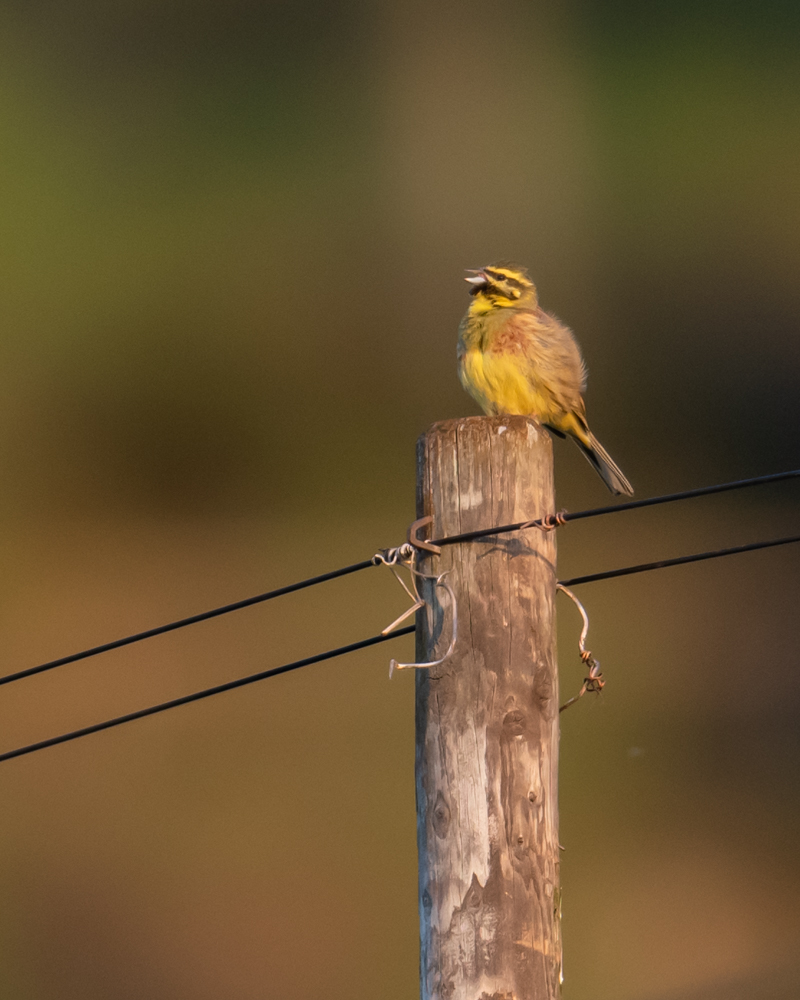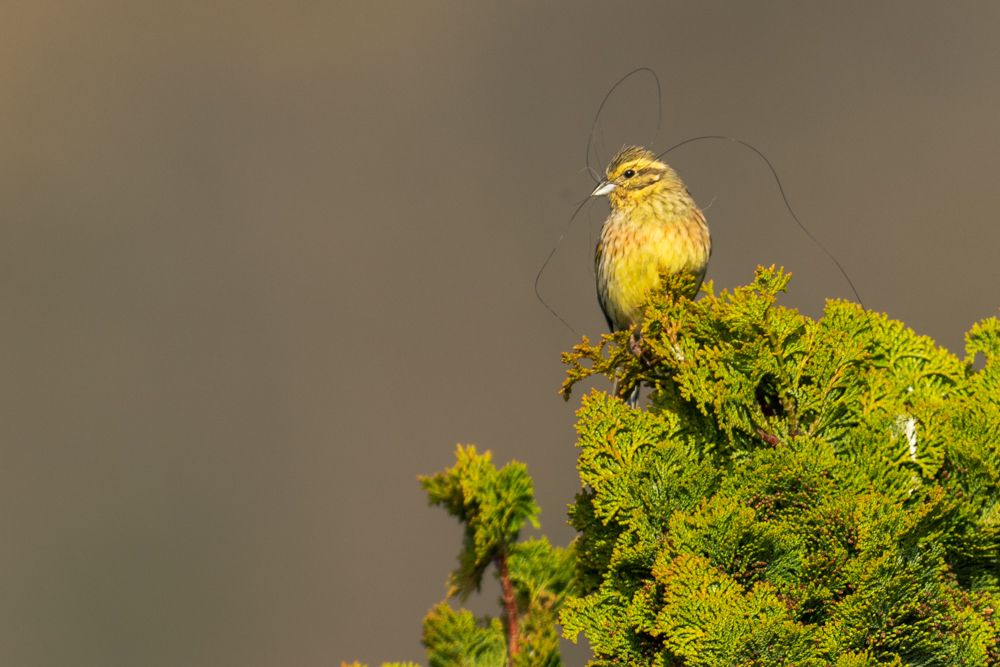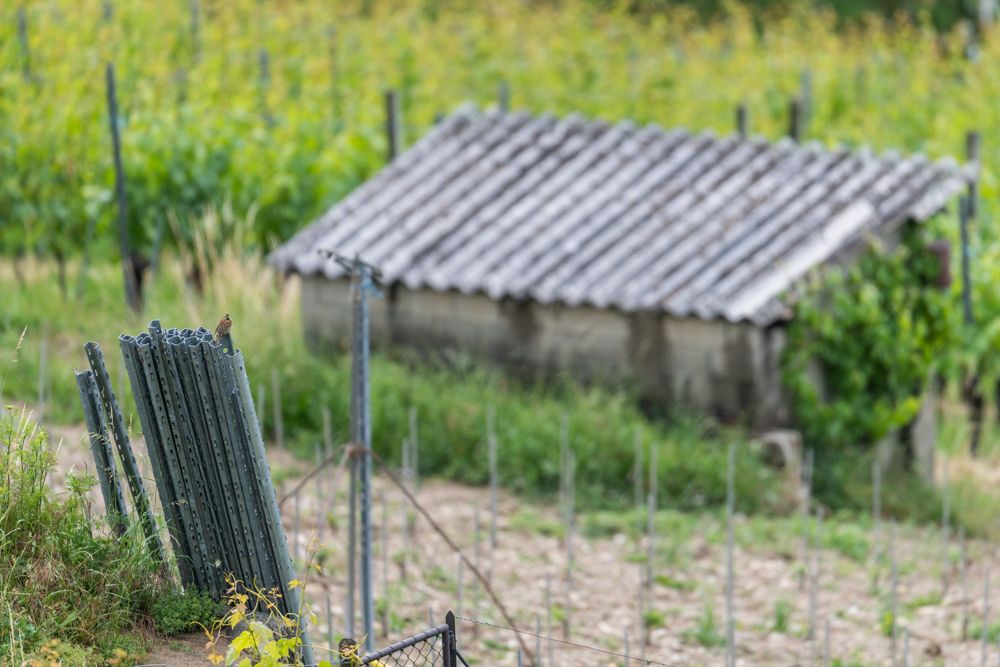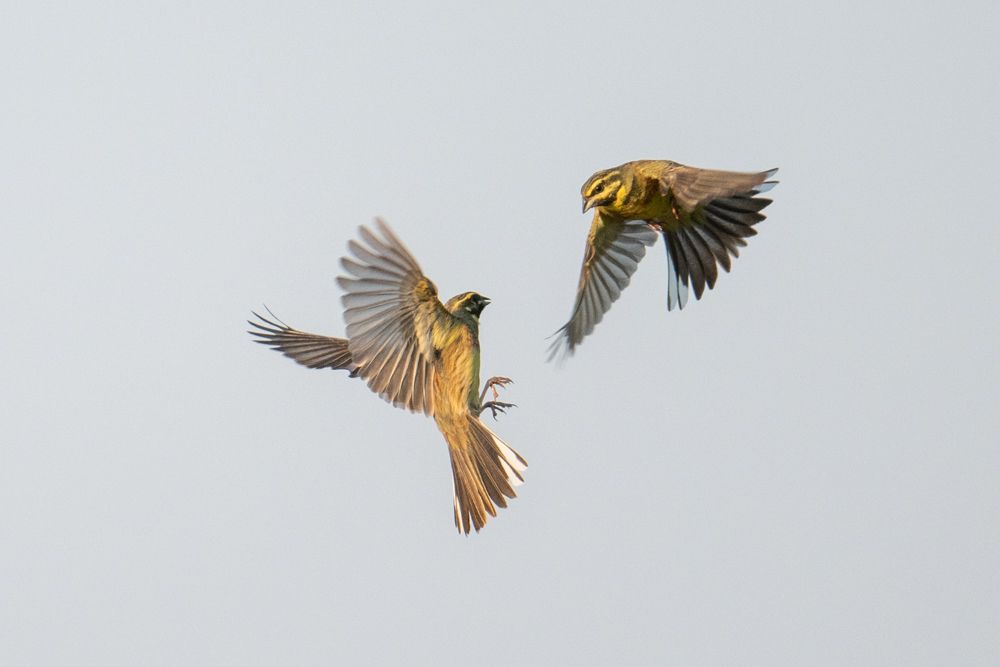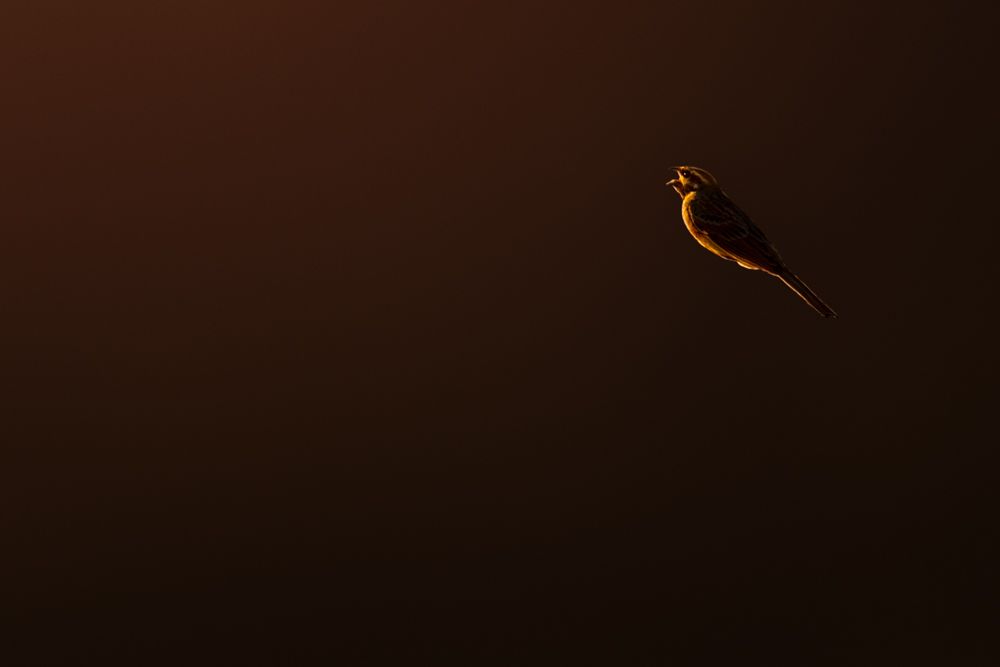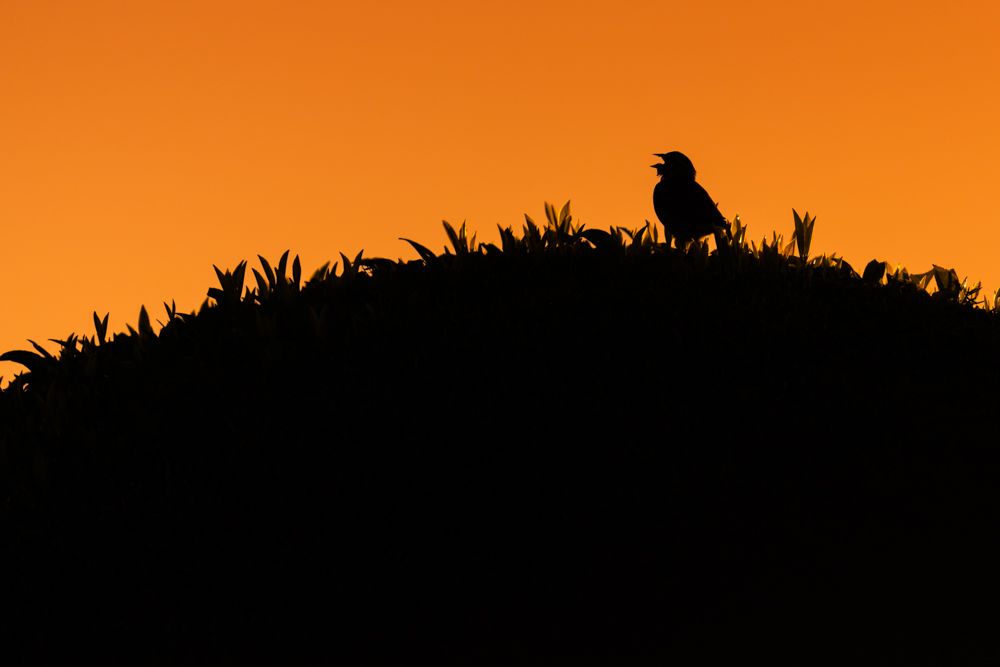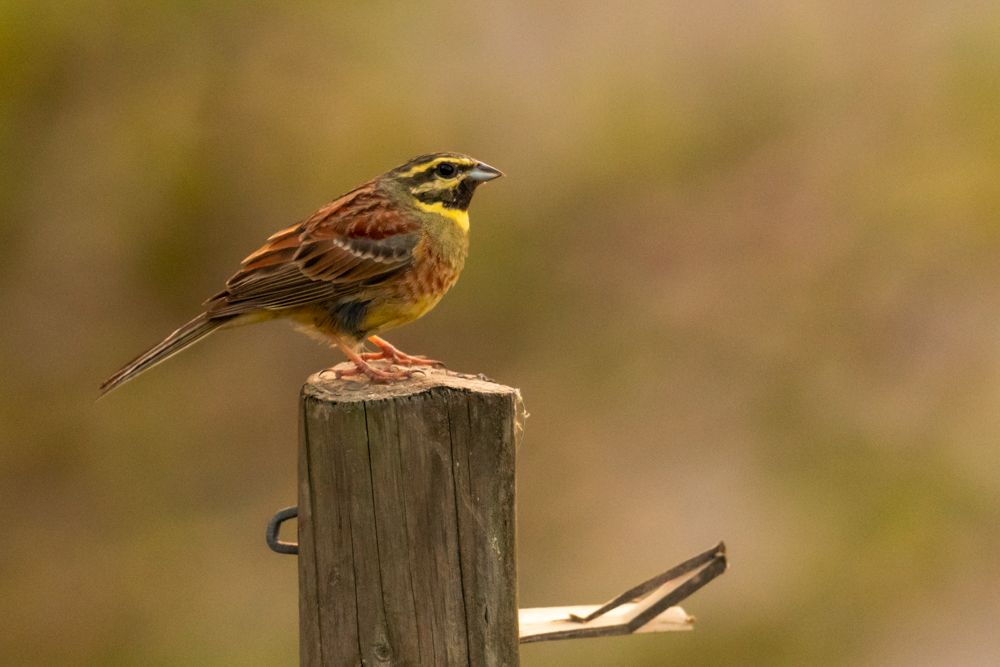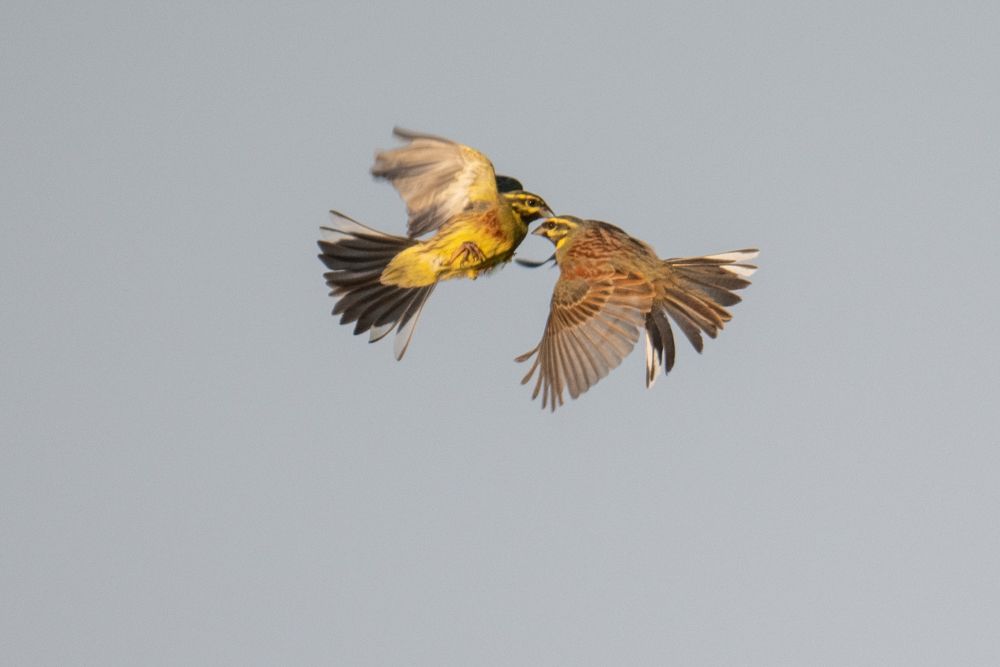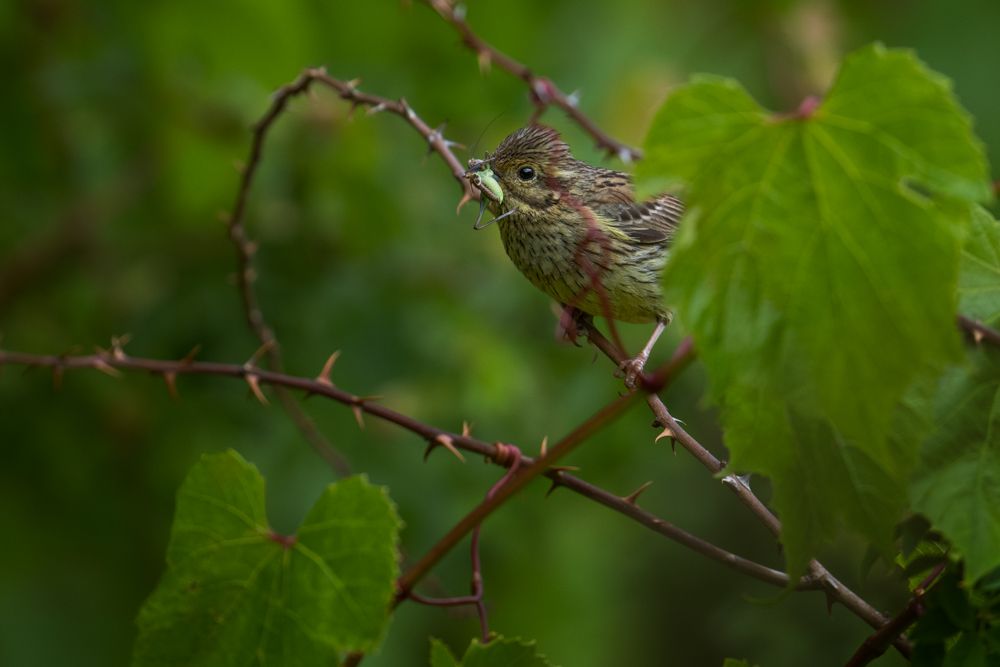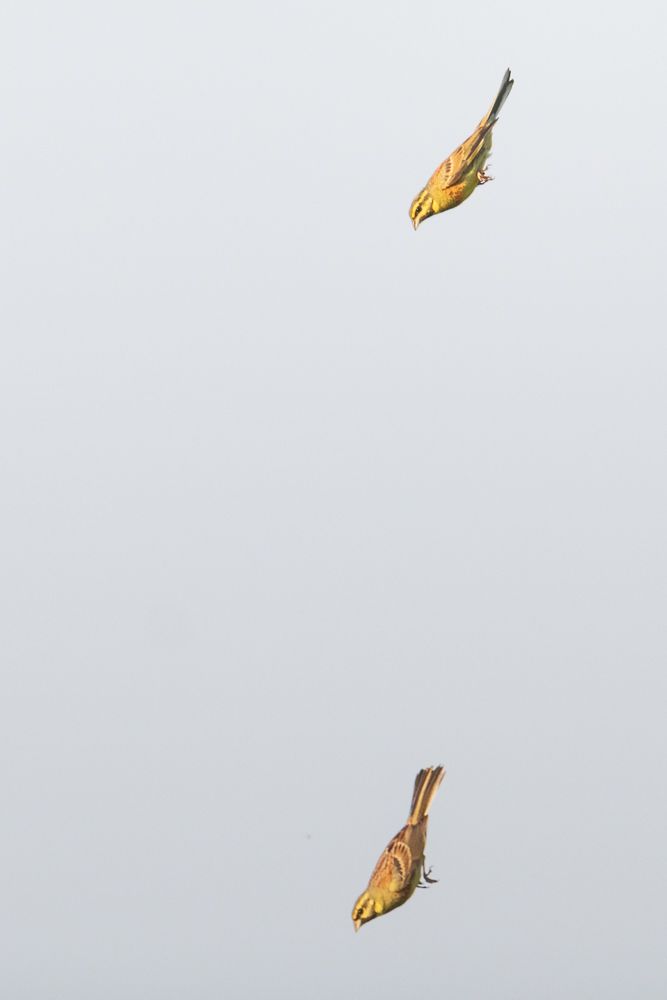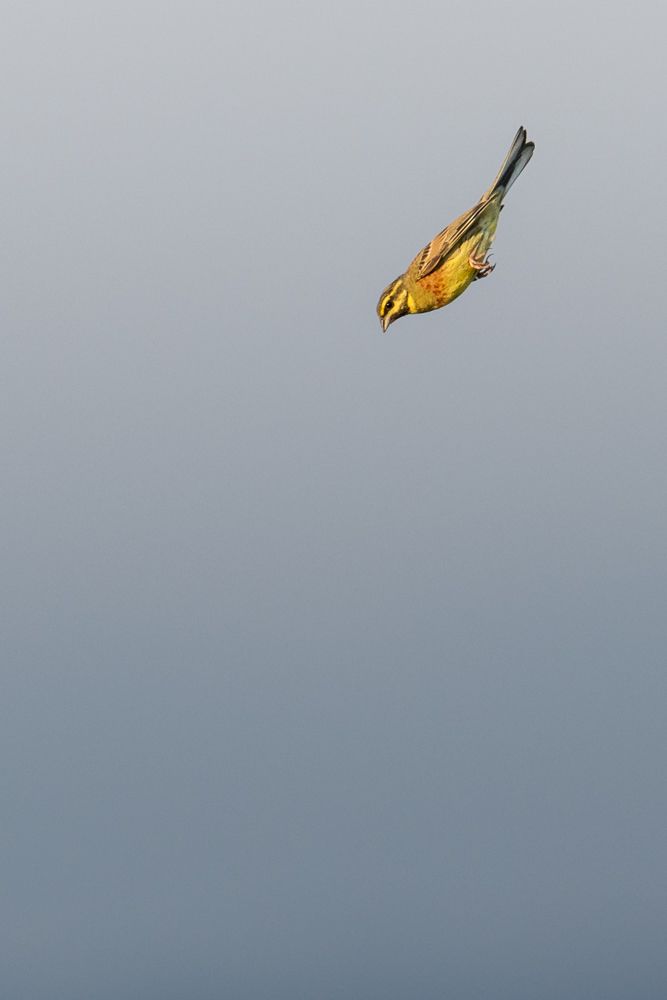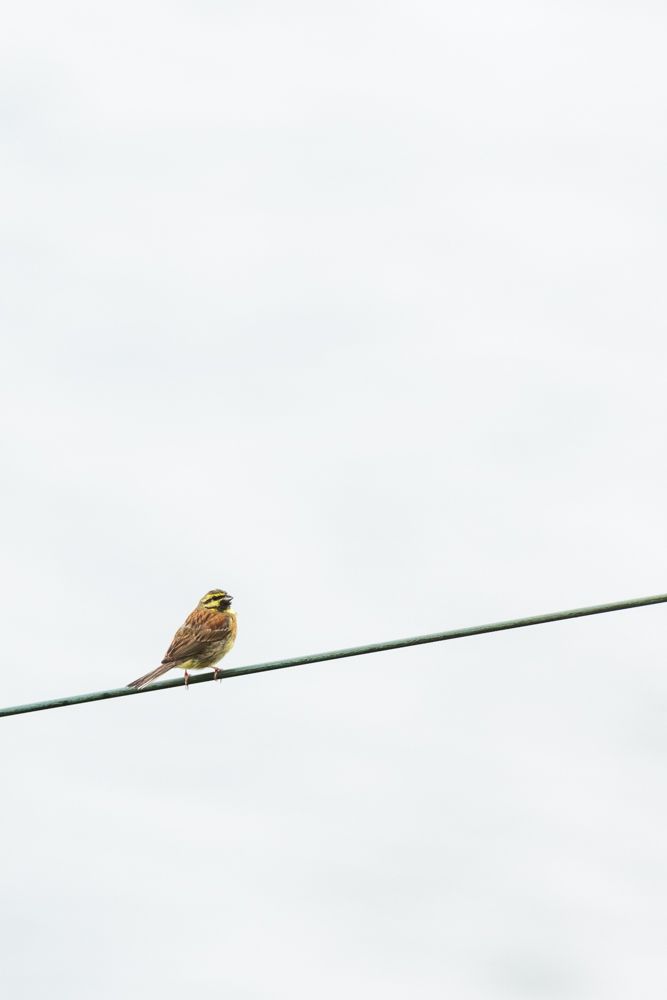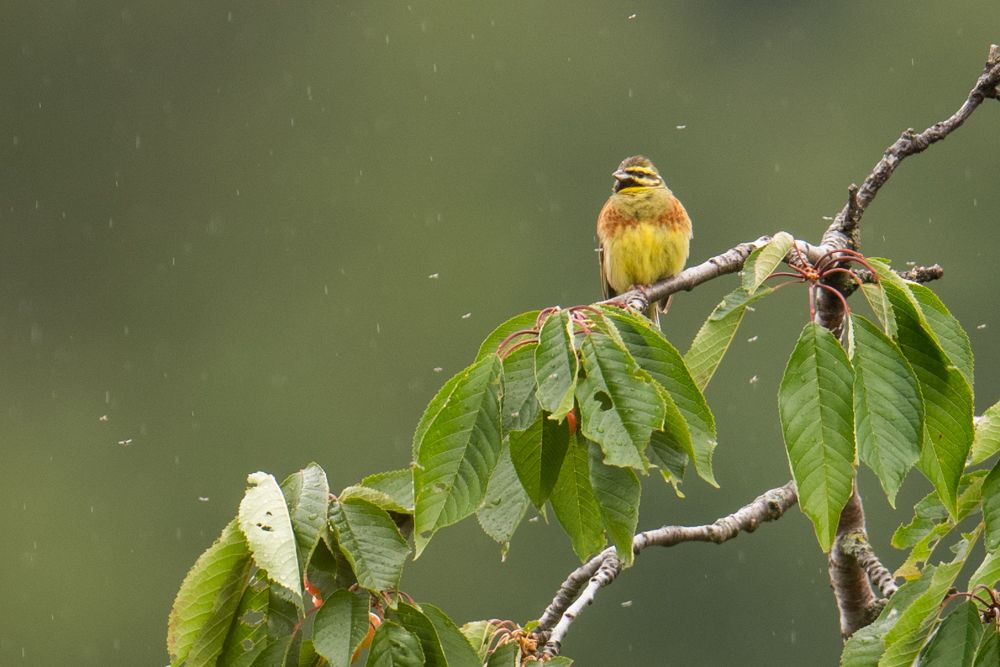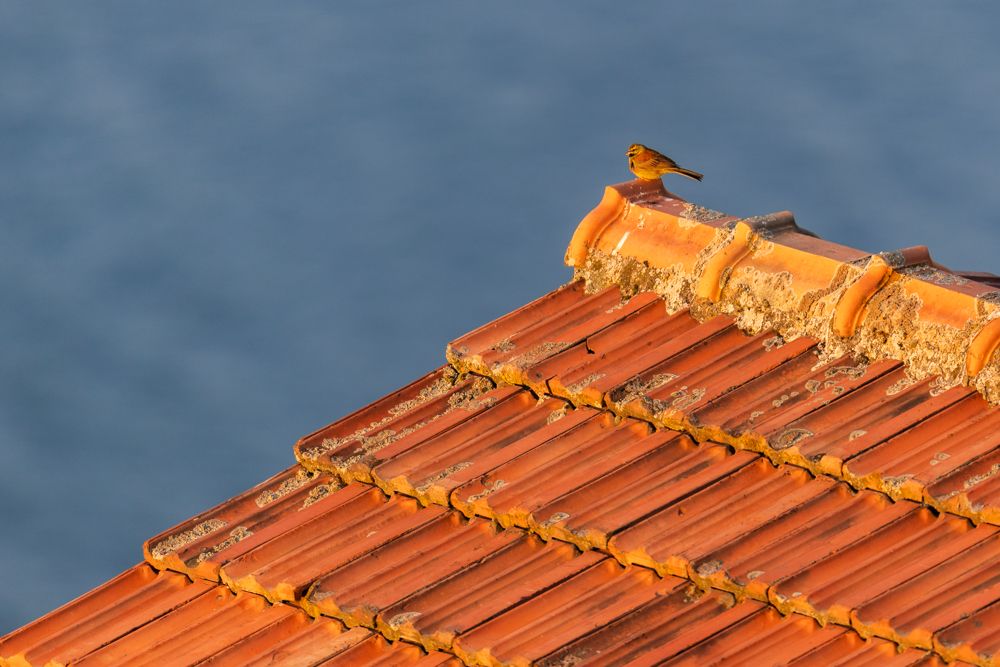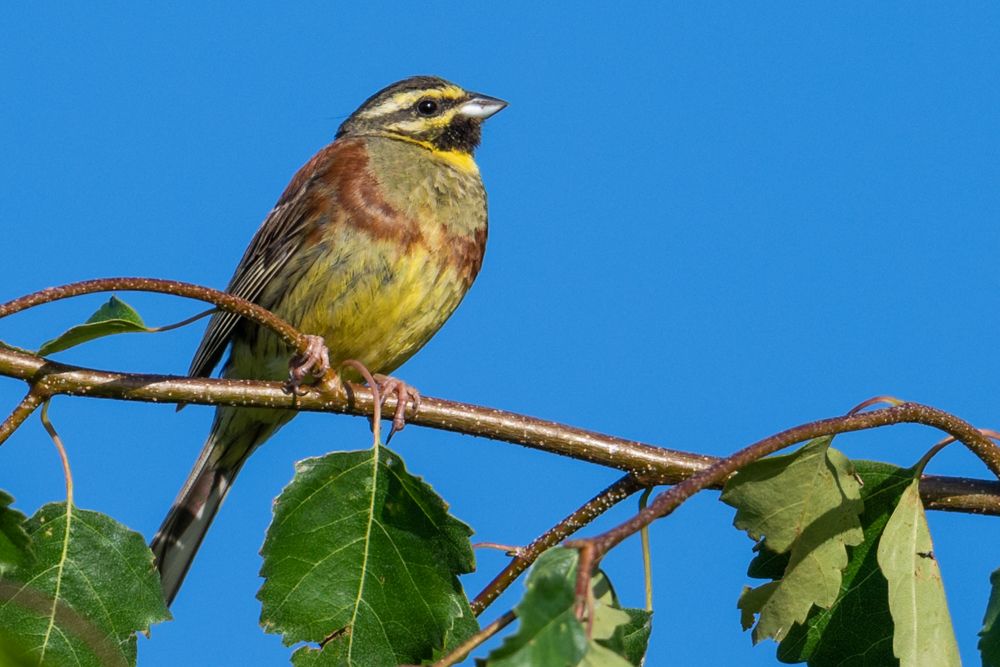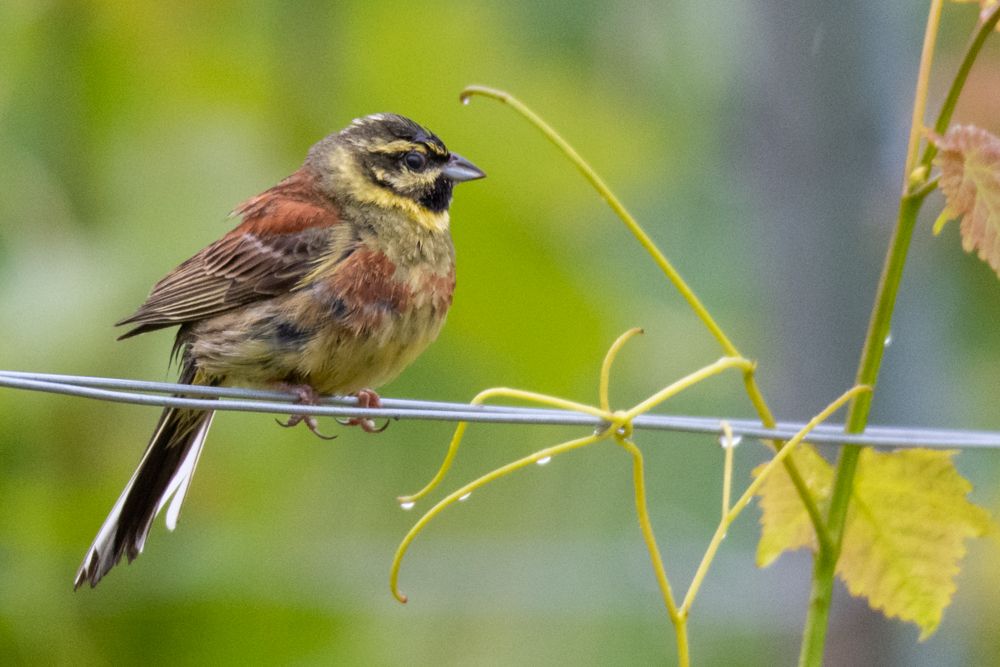Cirl bunting (Emberiza cirlus)
Profile
Scientific name: Emberiza cirlus
Class: Birds
Order: Passerine birds
Family: Bunting
Length: 15-16cm
Wingspan: 22-25cm
Weight: 20-29g
Distribution: Southern Europe, North Africa
Breeding population EU: 1'100'00 - 3'300'00 pairs
Habitat: Open landscapes
Migration behaviour: Resident bird
Appearance & Identification
The cirl bunting belongs to the bunting family and does not differ much from its conspecifics in many characteristics.The cirl bunting is characterized by quite long, notched tail feathers and by the slight dimorphism.
The male of the cirl bunting has a yellow colouring and a brown breast. The back is patterned brown and black. The cirl bunting has a striking head pattern. This is composed of a black crown and neck and an also black eye-line and chin.
The female is also yellow, but this is much less intense. The head pattern is less contrasting. The brown breast is only hinted at and the belly has a stronger dashing than in the males.
Risk of confusion
The male is similarly coloured like the yellowhammer. Both are strongly yellow, have a brown breast and the back is patterned brown and black. However, the yellowhammer has a stronger head pattern. The brown breast is also much more pronounced than in the yellowhammer. Depending on the individual, the brown breast is almost non-existent in the yellowhammer.
The females of the Yellowhammer and the yellowhammer are even more difficult to distinguish. The head pattern of the female yellowhammer is much stronger compared to the female yellowhammer. There are practically no other external features. The two species can also be distinguished by their habitat. In Switzerland, for example, the yellowhammer is found almost exclusively in the vines. The yellowhammer is more likely to be found in the traditional cultural landscape.
Habitat
The cirl bunting is a thermophilic species and inhabits open landscapes with very few trees. In addition to open areas, the cirl bunting also requires certain small structures and high perches. Often a single tree or a telephone line is sufficient for this. The north-eastern population mostly lives in vineyards, where they find their optimal habitat.
Distribution in Europe
The distribution of the cirl bunting is almost entirely restricted to Europe. The cirl bunting lives mostly in warm regions in Europe. The most northern population lives in the UK. Especially in South Germany, Switzerland, and West and Mid France, the breeding area is mainly limited to south-facing vineyards. These areas are already heated in the early morning hours and provide the right climate. Further south, the cirl bunting inhabits all types of open grassland. The breeding population in Europe is estimated at around 1’100’000 to 3’300’000 pairs. As a result of milder winters and the decreased use of problematic biocides, the population has increased slightly in recent years.
What does the cirl bunting eat?
The cirl bunting feeds to a large extent small insect. The young are mainly fed with insects such as grasshoppers, spiders and worms. In winter, the Circus Bunting feeds mainly on plant food. Overall, animal food is preferred.
Breeding behaviour
The cirl bunting builds its nest either on the ground or low in hedges and vines. The female lays 3-4 eggs in the nest. These are incubated for 11 to 13 days before the young hatch. They are fed by male and female and fly out after 11-14 days. The young are then fed for a few more days. After that they are chased away and the young have to find their own territory. A breeding pair can raise up to 2 maximum 3 broods per year.
Is the cirl bunting a migratory bird?
It depends. As a flocking bird, cirl buntings don't migrate to the south in general. But especially during cold winters, they wander around in small troops. Some cirl buntings also join the troops of yellowhammers. Some pairs of cirl bunting stay in their breeding grounds all year round, especially when the winter is pretty mild.
Photographing the cirl bunting
Cirl buntings are rather shy. With a lot of patience and some cover you can get a little bit closer to the birds, but to get really close to them a camouflage tent is (almost) necessary. Cirl buntings can be seen and photographed in almost any vineyard. Finding them in the vineyards can be a bit tricky though.
Other species
Resources
The population figures, length, weight and wingspan correspond to the data of the Vogelwarte Sempach
Information on behaviour, distribution etc. is based on my own observations and was supplemented with information from the following sources:
The Birds of Switzerland (2007) Lionel Maumary et al.
Swiss Breeding Bird Atlas 2013-2016
The Cosmos Bird Guide (2017) Lars Svensson et al.


